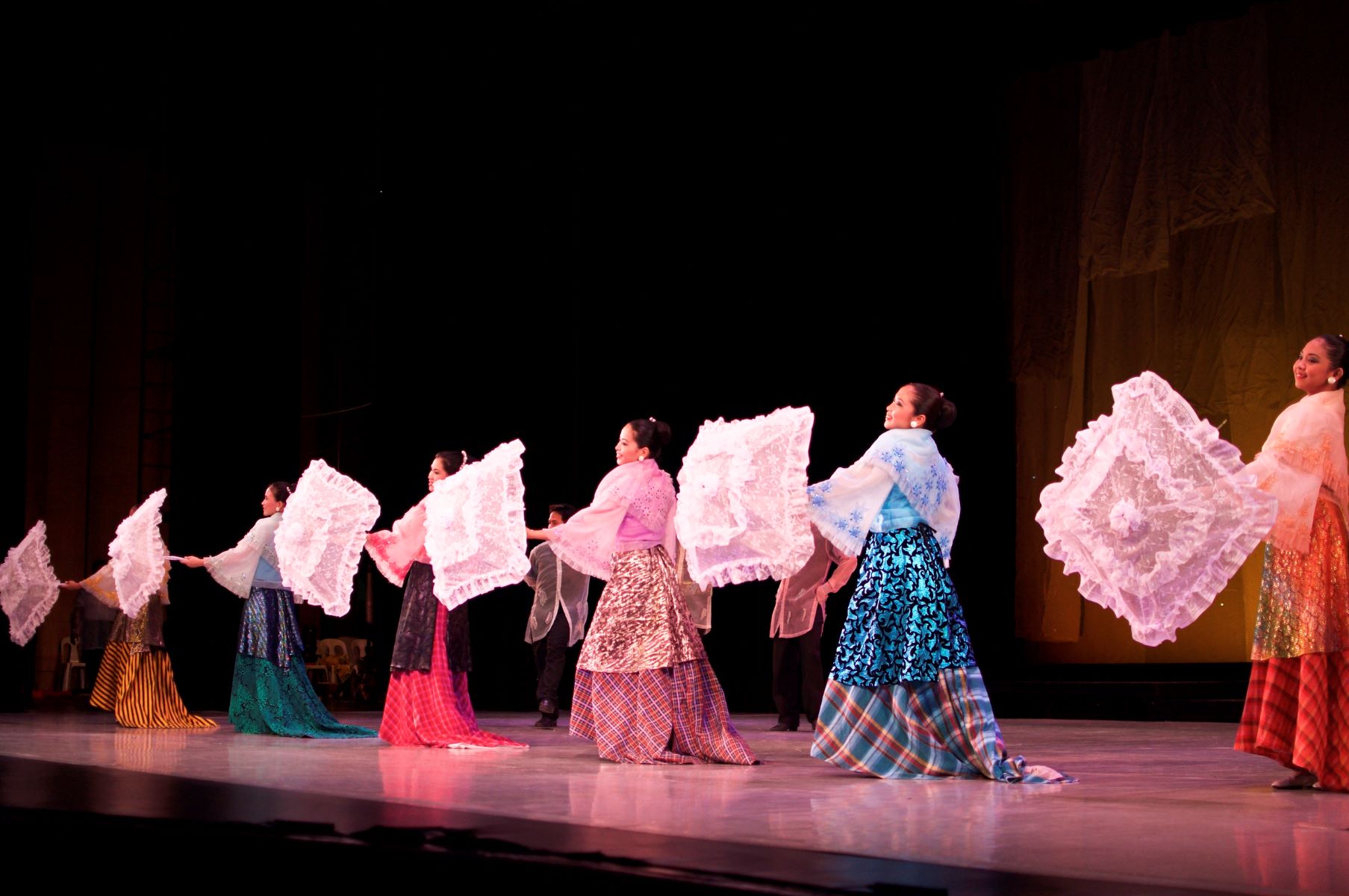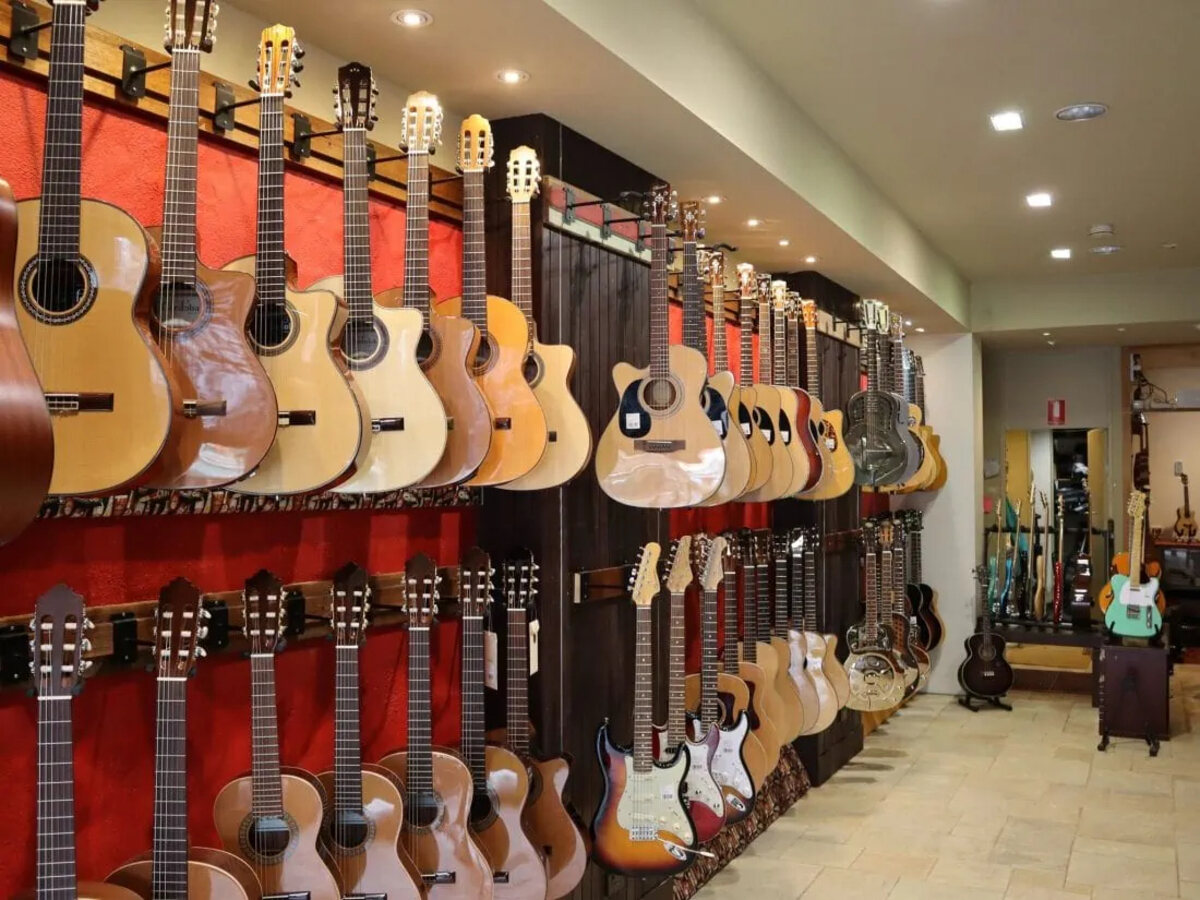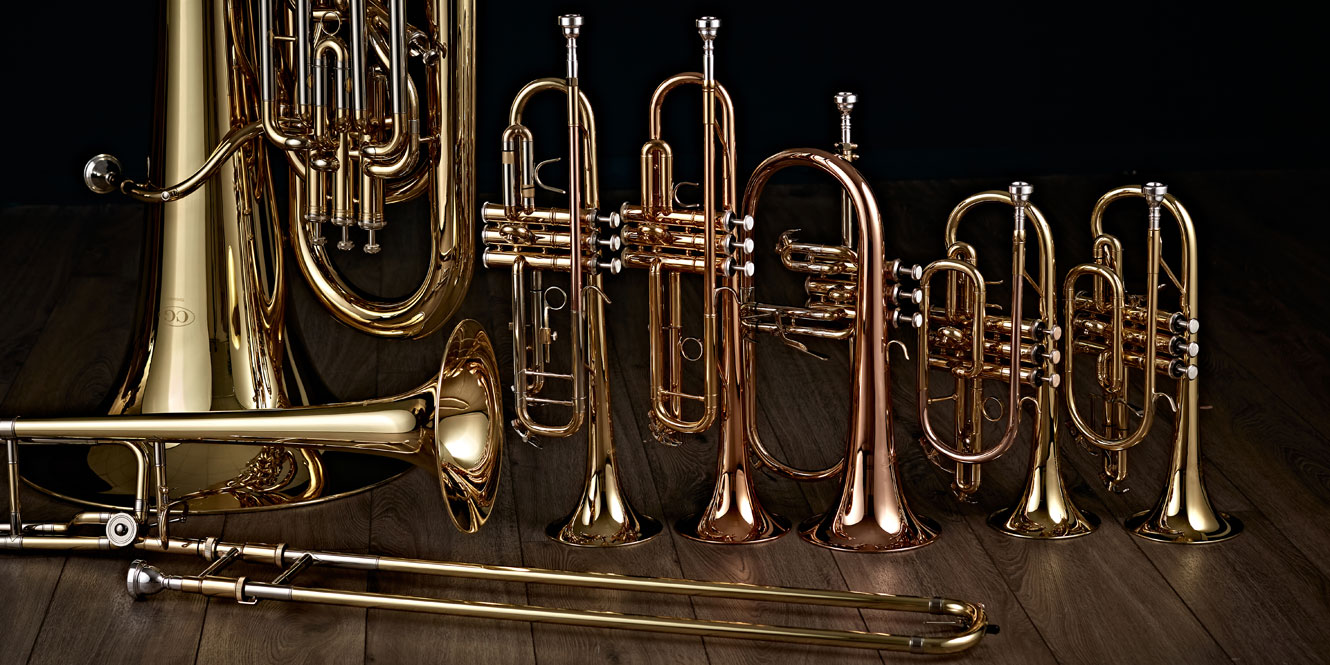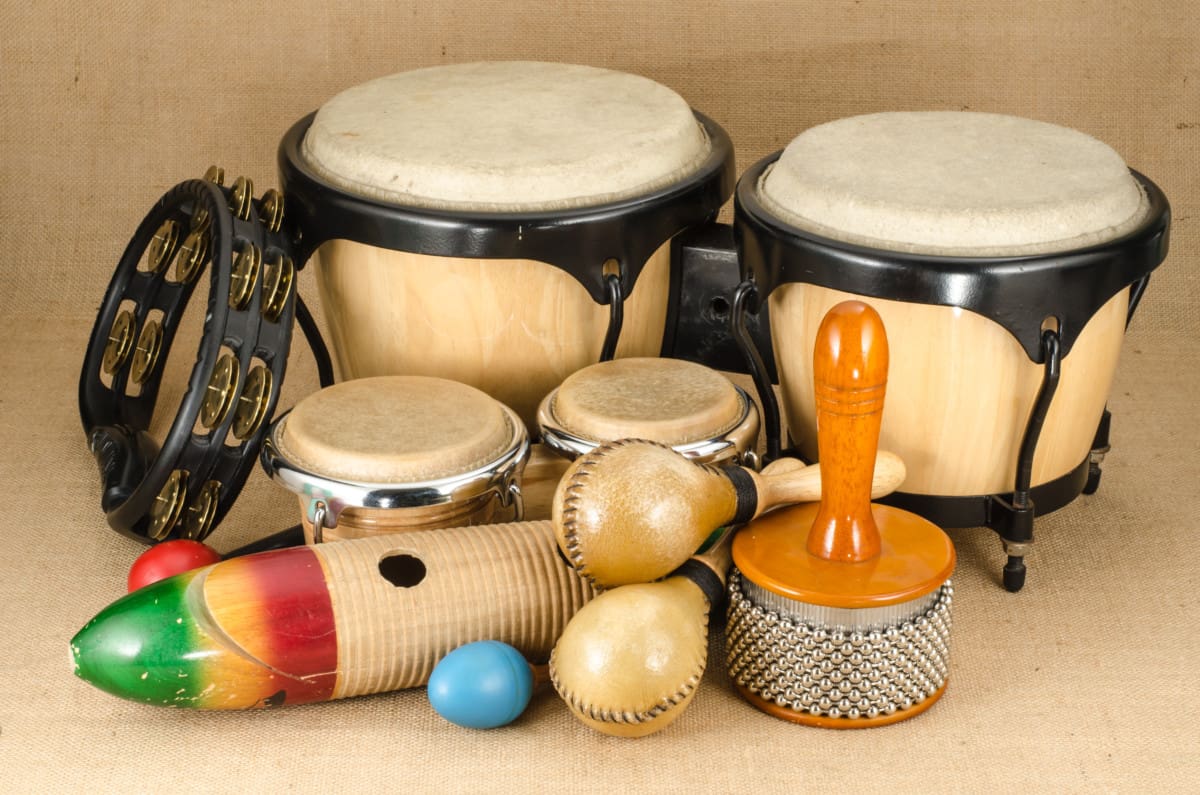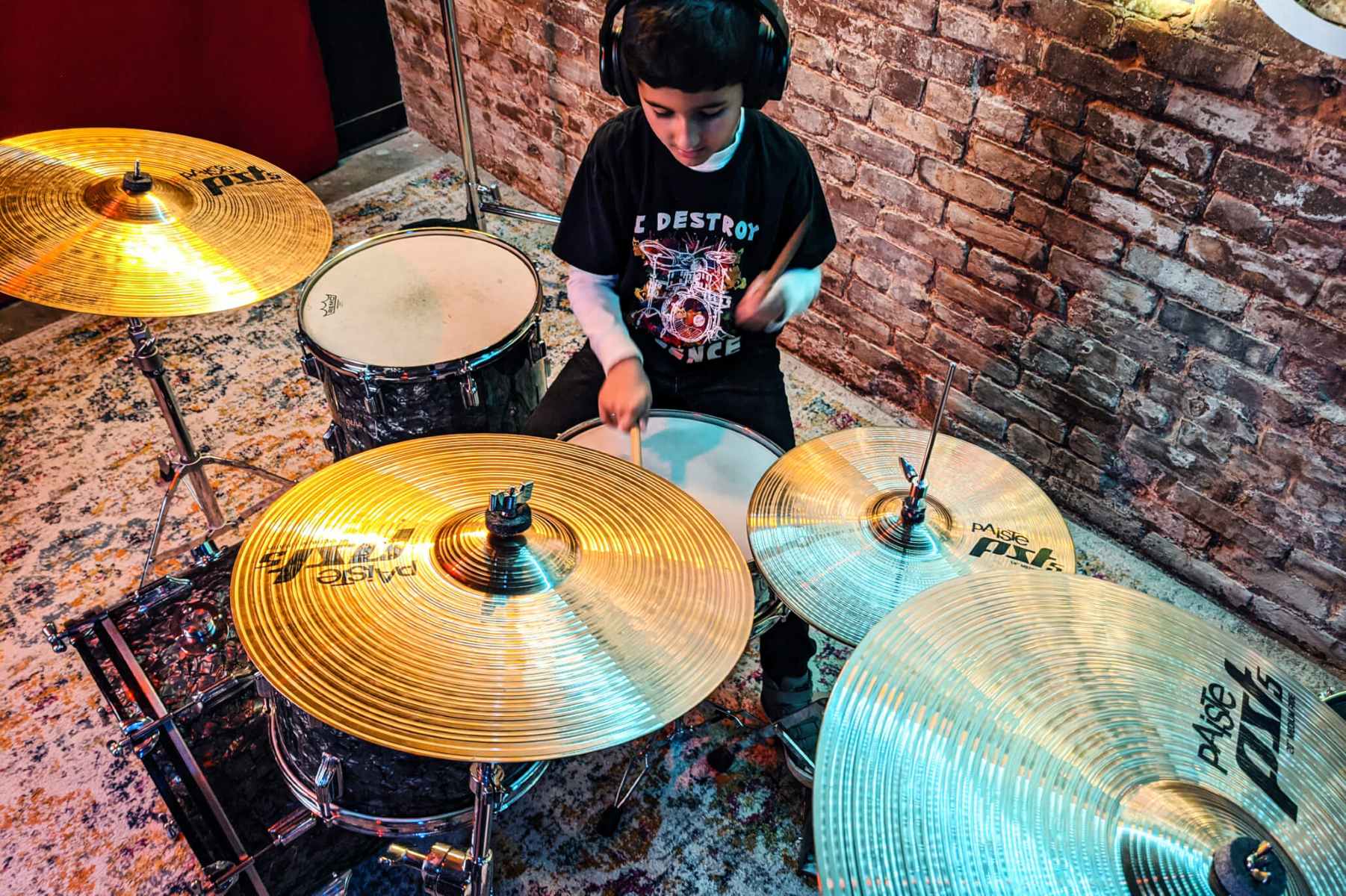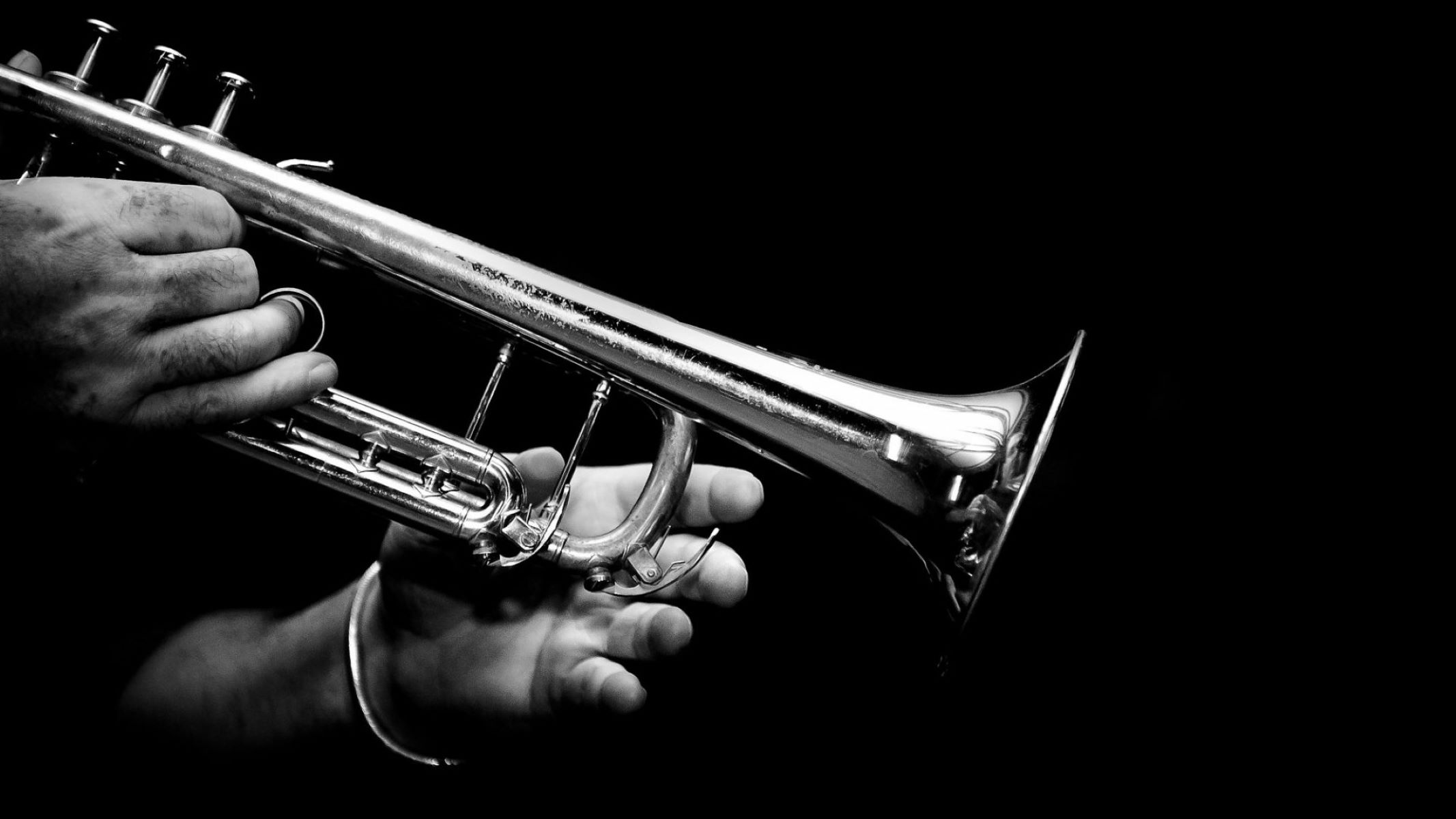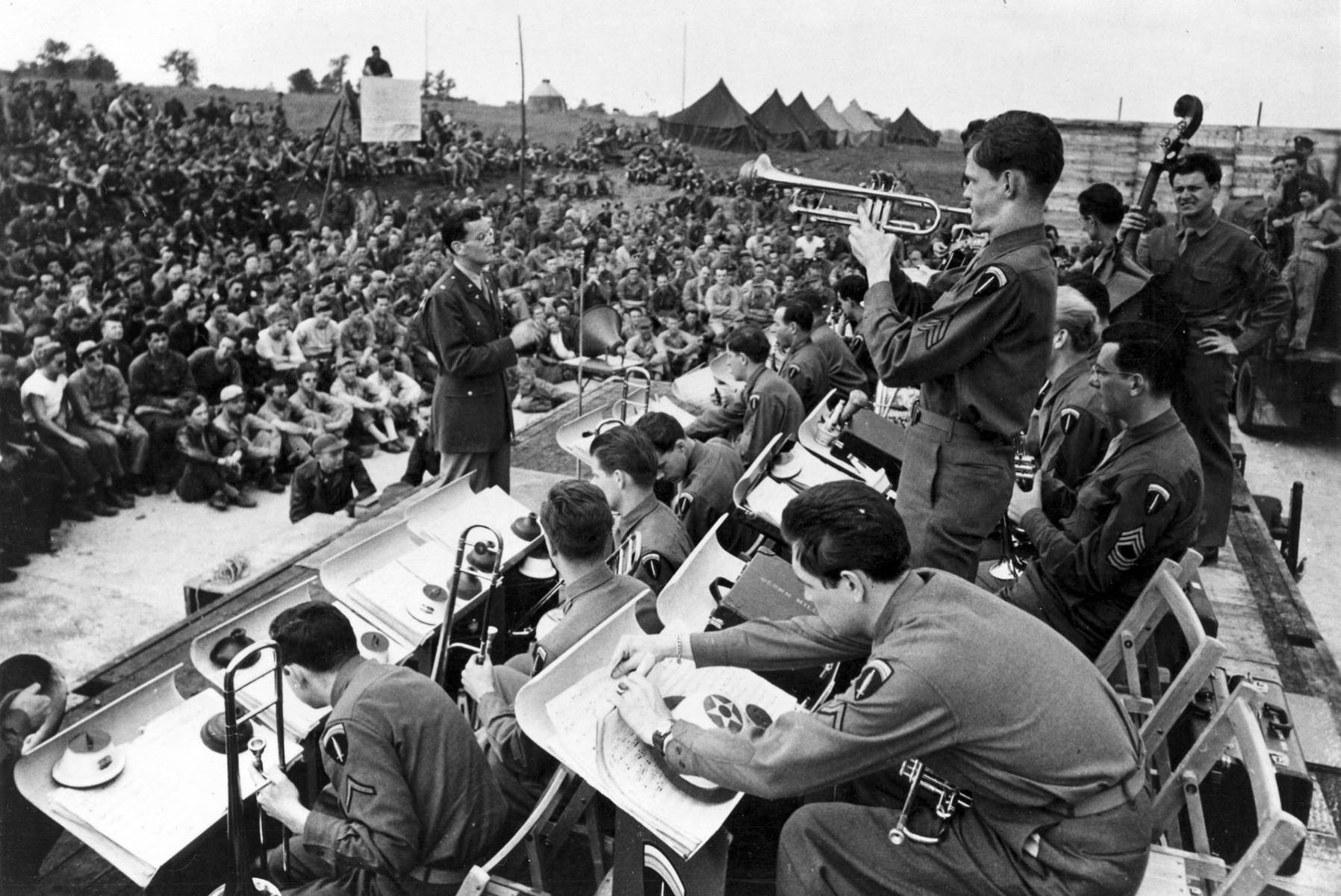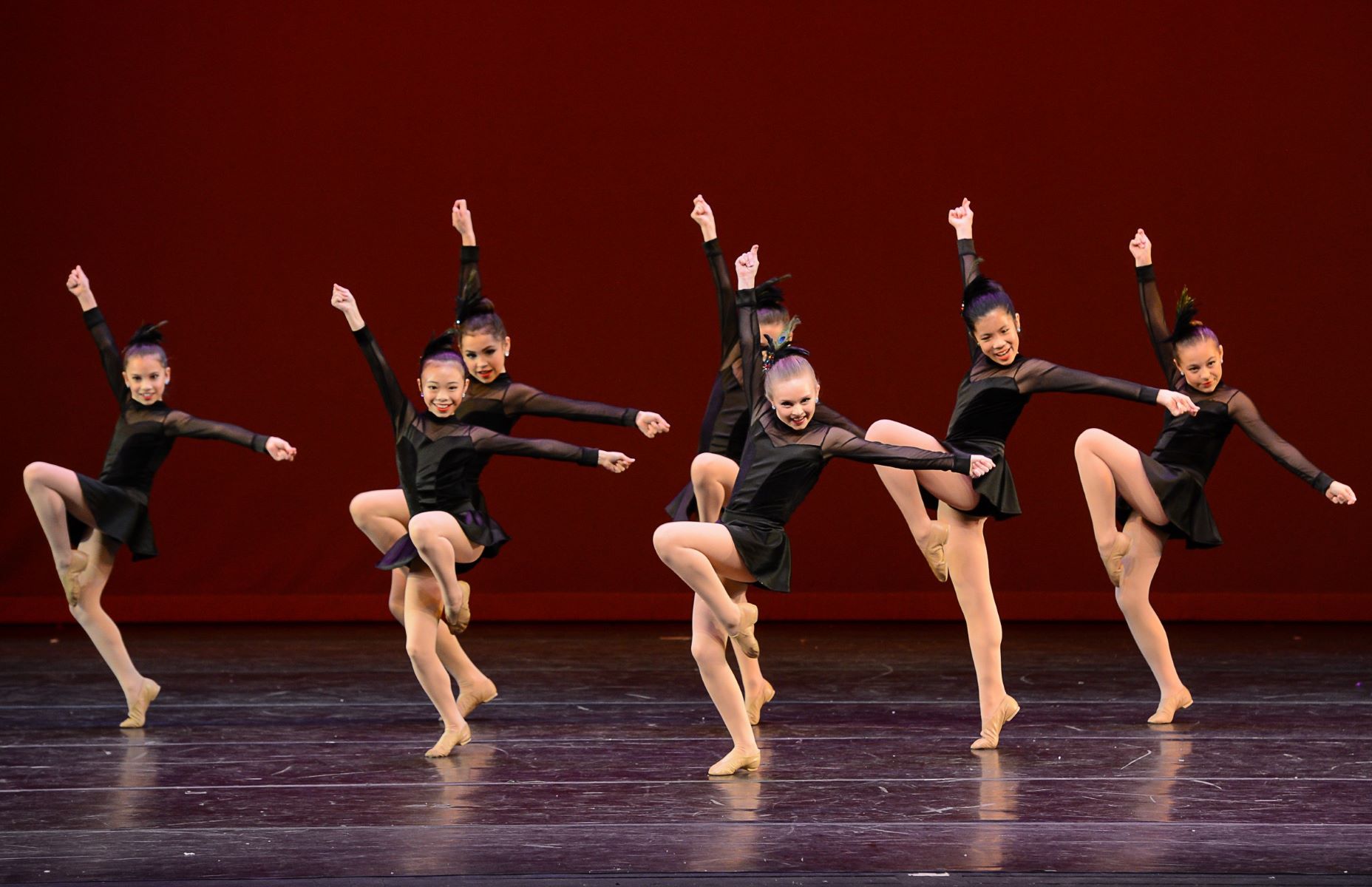

Jazz
What Type Of Dance Is Jazz
Modified: January 22, 2024
Discover the energetic and rhythmic world of Jazz dance. Unleash your passion for movement and explore the soulful expressions of this iconic dance style.
(Many of the links in this article redirect to a specific reviewed product. Your purchase of these products through affiliate links helps to generate commission for AudioLover.com, at no extra cost. Learn more)
Table of Contents
Introduction
Jazz dance is a vibrant and energetic form of dance that originated in the United States in the early 20th century. With its roots in African and European dance traditions, as well as the influences of popular music and culture, jazz dance has evolved into a diverse and dynamic art form.
Characterized by its syncopated rhythms, improvisation, and expressive movements, jazz dance is known for its lively and rhythmic style. It encompasses various styles and techniques, including traditional jazz, modern jazz, and contemporary jazz, allowing for creative expression and personal interpretation.
Throughout its history, jazz dance has played a significant role in the social, cultural, and artistic landscape. It has been a vehicle for self-expression, a form of entertainment, and a means of cultural exchange. From its origins in African American communities to its influence on Broadway, film, and television, jazz dance has left an indelible mark on the world of dance.
This article will delve into the history, characteristics, influences, and popular styles of jazz dance. We will explore the contributions of famous jazz dancers and examine the impact of jazz dance in popular culture. Furthermore, we will compare jazz dance to other dance styles and discuss the techniques and movements commonly associated with jazz dance.
Whether you are a dance enthusiast, a student, or simply curious about the world of jazz dance, this article will provide you with a comprehensive and engaging exploration of this captivating art form. So put on your dancing shoes and get ready to dive into the vibrant world of jazz dance!
History of Jazz Dance
Jazz dance originated in the early 20th century in African American communities in the southern United States. It emerged as a fusion of African and European dance traditions, incorporating movements from traditional African dances, European social dances, and even elements of ballet and tap dance.
At its inception, jazz dance was closely intertwined with the jazz music genre, which was also developing during this time. The syncopated rhythms and improvisational nature of jazz music greatly influenced the movements and style of jazz dance.
During the early 1900s, jazz dance gained popularity and began to flourish in African American clubs and dance halls. It provided an outlet for creative expression and enabled individuals to showcase their unique styles and abilities. Jazz dance was an important part of the Harlem Renaissance, a cultural movement that celebrated African American art, music, and literature.
In the 1930s and 1940s, jazz dance took center stage with the rise of big band swing music. The energetic and acrobatic movements of swing dance, which incorporated elements of jazz dance, became a craze across the United States. Influential dancers such as Frankie Manning and Norma Miller brought jazz dance to the forefront, performing and choreographing routines that showcased its rhythmic and improvisational nature.
In the mid-20th century, jazz dance experienced further evolution with the advent of Broadway musicals and Hollywood films. Choreographers like Jack Cole and Bob Fosse incorporated jazz dance into their choreography, fusing it with elements of ballet and modern dance. Jazz dance became a staple in musical theater, particularly in shows such as “West Side Story” and “Chicago,” where it added a dynamic and expressive element to storytelling.
Throughout the latter half of the 20th century and into the 21st century, jazz dance continued to evolve and adapt to contemporary styles and influences. The emergence of hip-hop, funk, and other urban dance styles brought new elements into jazz dance, resulting in various offshoots and hybrid forms.
Today, jazz dance remains a prominent and vibrant form of dance, with a strong presence in dance studios, schools, and professional companies worldwide. It continues to reflect the diverse cultural influences that have shaped its history while providing a platform for individual expression and artistic innovation.
Characteristics of Jazz Dance
Jazz dance is known for its lively, energetic, and expressive style. It incorporates a wide range of movements that are characterized by their syncopated rhythms, dynamic contrasts, and fluidity. Here are some key characteristics of jazz dance:
- Rhythmic Complexity: Jazz dance is renowned for its intricate rhythms and syncopated beats. Dancers often perform complex footwork, quick turns, and rhythmic isolations that require precision and a strong sense of timing.
- Expressive Movements: Jazz dance allows for a diverse range of movements, from sharp and angular to smooth and flowing. Dancers use their entire body to convey emotions, tell stories, and showcase their individuality.
- Improvisation: Jazz dance embraces improvisation as a key element of expression. Dancers have the freedom to interpret the music and create their own movements, fostering spontaneity and creativity.
- Dynamic Contrasts: Jazz dance often incorporates sudden changes in energy, speed, and intensity. Dancers seamlessly transition between fast and slow movements, explosive jumps and leaps, and subtle gestures, creating visually captivating performances.
- Isolations: Isolation is a fundamental technique in jazz dance. Dancers learn to move specific parts of their body independently while maintaining control and coordination. This includes isolating the hips, shoulders, arms, and head to create dynamic and visually striking movements.
- Use of Space: Jazz dance utilizes the entire space of the stage, with dancers moving dynamically across the floor and exploring different levels—high, medium, and low. This adds depth and dimension to performances and enhances the visual impact.
- Syncopation: Syncopation is a hallmark of jazz dance, characterized by rhythmic accents placed on off-beats. Dancers often incorporate syncopated footwork, body isolations, and accents to create a lively and infectious rhythm.
- Emphasis on Individual Style: Jazz dance celebrates individuality and encourages dancers to showcase their unique style. While there are foundational techniques and movements in jazz, dancers are encouraged to add their personal flair and interpretation, allowing for a diverse and vibrant art form.
These characteristics make jazz dance a highly versatile and engaging form of dance, capturing the essence of the music and allowing for creative expression and individuality. Whether performed in a traditional jazz routine or blended with other dance styles, jazz dance continues to captivate and inspire dancers and audiences alike.
Influences on Jazz Dance
Jazz dance has been shaped and influenced by various cultural, artistic, and social factors throughout its history. Here are some of the key influences that have had a significant impact on the development and evolution of jazz dance:
- African Dance: African dance traditions played a crucial role in the creation of jazz dance. The rhythmic movements, polyrhythms, and improvisational nature of African dance were woven into the fabric of jazz dance, bringing a rich cultural heritage and vibrant energy to the form.
- European Influence: European social dances, such as the waltz and the polka, found their way into jazz dance through the blending of cultures in early 20th century America. These dances contributed to the development of partner work, intricate footwork, and formalized steps seen in jazz dance.
- Jazz Music: Jazz dance is intrinsically linked to jazz music. The syncopated rhythms, improvisation, and musicality of jazz music greatly influenced the movements and style of jazz dance. Dancers often draw inspiration from the melodies, harmonies, and overall feel of jazz music to create their choreography.
- Modern Dance: Modern dance pioneers, such as Martha Graham and Isadora Duncan, had a significant impact on jazz dance. Their emphasis on freedom of movement, expressiveness, and pushing artistic boundaries influenced jazz dance choreographers to incorporate these elements into their work.
- Broadway and Film: The influence of Broadway musicals and Hollywood films on jazz dance cannot be understated. Choreographers like Jack Cole and Bob Fosse incorporated jazz dance into iconic productions, including “West Side Story,” “Chicago,” and “Cabaret.” These theatrical productions brought jazz dance to a wider audience and elevated its status as a performing art form.
- Street and Urban Dance Styles: In recent decades, street and urban dance styles, such as hip-hop and funk, have made a significant impact on jazz dance. These styles have added new elements of athleticism, isolations, and urban flavor to jazz dance, resulting in fusion styles such as jazz-funk and street jazz.
- Cultural Exchange: Jazz dance has also been influenced by cultural exchange and globalization. As dancers from different backgrounds and cultures interact and collaborate, their unique movement styles and traditions merge with jazz dance, creating hybrid forms and diverse interpretations of the art form.
These influences have contributed to the richness and versatility of jazz dance, allowing it to continuously evolve and adapt to changing times and artistic trends. Jazz dance remains a dynamic and ever-expanding art form, embracing new influences while honoring its rich history and cultural roots.
Popular Styles of Jazz Dance
Jazz dance encompasses a wide range of styles and variations that have evolved over time. Each style brings its own unique flavor and charm, offering dancers and audiences a diverse and captivating experience. Here are some of the popular styles of jazz dance:
- Traditional Jazz: Traditional jazz, also known as Dixieland jazz, is rooted in the jazz music of the early 20th century. It incorporates elements of African dance, European social dances, and early American vernacular movements. Traditional jazz is characterized by its energetic footwork, swinging rhythms, and improvisational style.
- Modern Jazz: Modern jazz emerged in the mid-20th century and is influenced by the techniques and principles of modern dance. This style combines the technical precision of classical ballet with the dynamic movements, isolations, and syncopated rhythms of jazz dance. Modern jazz often explores complex choreography, expressive storytelling, and innovative use of space.
- Contemporary Jazz: Contemporary jazz is a fusion of various dance styles, including jazz, modern, and lyrical dance. It incorporates fluid and expressive movements, emphasizing individual interpretation and emotional expression. Contemporary jazz often pushes boundaries with its dynamic and unconventional choreography, reflecting the ever-evolving nature of jazz dance.
- Jazz-Funk: Jazz-funk is a contemporary style that blends jazz dance with elements of funk, hip-hop, and street dance. It combines the technicality of jazz dance with the grooves, body isolations, and contemporary urban movements. Jazz-funk is characterized by its high energy, intricate footwork, and infectious rhythmic patterns.
- Broadway Jazz: Broadway jazz refers to the style of jazz dance commonly seen in musical theater productions. It incorporates elements of jazz, tap dance, and theatrical movements. Broadway jazz focuses on storytelling, precise choreography, and dramatic performances, often featuring large-scale production numbers and show-stopping dance routines.
- Lyrical Jazz: Lyrical jazz combines the fluidity and expressiveness of lyrical dance with the rhythmic and energetic elements of jazz dance. It emphasizes the connection between movement and emotion, incorporating sweeping and flowing movements, controlled extensions, and dynamic shifts in speed and intensity.
- Street Jazz: Street jazz, also known as urban jazz, is a contemporary fusion style that blends jazz dance with street dance elements. It draws inspiration from hip-hop, funk, and other urban dance styles, incorporating grooves, isolations, and rhythmic patterns. Street jazz often features fast footwork, intricate body movements, and a high level of individual expression.
These popular styles of jazz dance highlight the versatility, creativity, and vibrancy of the art form. Each style offers its own unique movement vocabulary, technique, and musicality, allowing dancers to explore and showcase their individuality while paying homage to the rich history and cultural influences of jazz dance.
Famous Jazz Dancers
Jazz dance has been shaped and propelled by the incredible talents of numerous influential dancers throughout history. These individuals have not only made significant contributions to the art form but have also left a lasting impact on the world of dance. Here are some of the famous jazz dancers who have left an indelible mark:
- Fred Astaire: Fred Astaire is an iconic figure in the world of dance and entertainment. Known for his smoothness, grace, and impeccable technique, Astaire brought jazz dance to the silver screen. His performances in films like “Top Hat” and “Swing Time” showcased his mastery of jazz dance and elevated its status in popular culture.
- Gus Giordano: Gus Giordano was a pioneering figure in jazz dance. He founded the Gus Giordano Dance School in Chicago and developed a technique and style that influenced generations of jazz dancers. He is renowned for his dynamic and inventive choreography, which blended musicality, athleticism, and strong technicality.
- Bob Fosse: Bob Fosse was a legendary choreographer and director, known for his unique style that combined jazz dance with elements of vaudeville, burlesque, and modern dance. His iconic choreography in shows like “Chicago” and “Cabaret” featured sharp movements, isolations, and signature hand gestures, creating a distinct and visually striking style.
- Savion Glover: Savion Glover is a virtuosic tap dancer who has incorporated elements of jazz dance into his performances. His rhythmic precision, intricate footwork, and boundless energy have made him a prominent figure in both the tap and jazz dance worlds. Glover’s contributions have helped to bridge the gap between traditional tap and contemporary jazz dance.
- Matt Mattox: Matt Mattox was a renowned jazz dancer and teacher known for his dynamic and athletic style. He developed the Mattox Technique, which emphasized strong technique, rhythmic precision, and expressive movements. Mattox’s work in Broadway shows and his influential teaching impacted the techniques used by many jazz dance professionals.
- Misty Copeland: While primarily known as a ballet dancer, Misty Copeland has also showcased her versatility in jazz dance. Her powerful and expressive performances have captivated audiences around the world. Through her artistry and groundbreaking achievements as a Black female dancer, Copeland has broken barriers and inspired new generations of dancers.
- Frankie Manning: Frankie Manning was a key figure in the swing dance movement of the 1930s and 1940s. He played a significant role in popularizing the Lindy Hop, a style of swing dance that incorporated jazz dance elements. Manning’s innovative choreography and infectious personality made him a beloved and influential figure in jazz dance history.
These are just a few of the many incredible jazz dancers who have left their mark on the art form. Their contributions, artistry, and innovation have shaped the way we perceive and appreciate jazz dance, ensuring its enduring popularity and influence in the dance world.
Jazz Dance in Popular Culture
Jazz dance has had a significant presence in popular culture, permeating various forms of entertainment and leaving an indelible mark on the world of music, film, and television. Its infectious energy, expressive movements, and dynamic style have captured the hearts of audiences worldwide. Here are some ways jazz dance has made an impact in popular culture:
- Broadway Musicals: Jazz dance has long been an integral part of Broadway musicals, adding a dynamic element to storytelling and captivating audiences. Classic shows like “West Side Story,” “Chicago,” and “A Chorus Line” incorporate jazz dance in their choreography, showcasing the unique fusion of music, storytelling, and dance.
- Film and Television: Jazz dance has left its mark in film and television, with iconic dance sequences that have become ingrained in popular culture. From Fred Astaire and Ginger Rogers gliding across the dance floor in classic Hollywood films to Bob Fosse’s stylized choreography in “All That Jazz,” jazz dance has provided memorable moments and breathtaking performances on the screen.
- Talent Shows and Competitions: Jazz dance has become a prominent feature on talent shows and dance competitions, captivating both participants and audiences. Shows like “So You Think You Can Dance” and “Dancing with the Stars” have showcased incredible jazz dance routines, propelling the genre into the mainstream and inspiring dancers of all levels.
- Music Videos: Jazz dance has made its presence felt in the world of music videos. Artists often incorporate jazz dance movements and choreography into their videos to elevate the visual appeal and add an exciting element to their performances. Jazz dance brings a sense of rhythm, style, and flair that complements various music genres.
- Commercial Dance: Jazz dance has found its way into commercials, becoming a powerful and energetic tool for advertisers. Its vibrant movements and infectious energy help to capture attention and create a connection with audiences, transforming products into captivating experiences.
- Dance Studios and Pop Culture: Jazz dance has gained popularity and recognition through dance studios and their impact on pop culture. These studios offer jazz dance classes to students of all ages, nurturing and showcasing the talent of future generations. Additionally, the integration of jazz dance into pop music videos and live performances has solidified its presence in mainstream culture.
Jazz dance continues to inspire and influence popular culture, expanding its reach and captivating audiences through its expressive and dynamic movements. Its ability to blend with different art forms has made it a versatile and celebrated dance style, ensuring its enduring presence in the entertainment industry.
Jazz Dance vs. Other Dance Styles
Jazz dance stands out as a distinct dance style, with its own unique characteristics and techniques. However, it is often compared and contrasted with other dance styles, highlighting the similarities and differences. Let’s explore how jazz dance differs from some other popular dance styles:
- Ballet: Jazz dance and ballet share some similarities, but also have distinct differences. Ballet is characterized by its classical technique, precise movements, and emphasis on maintaining proper form and alignment. Jazz dance, on the other hand, focuses on rhythmic movements, syncopated footwork, and expressive body isolations. Ballet tends to have a more formal and structured approach, whereas jazz dance offers a more relaxed and rhythmic style.
- Tap Dance: Jazz dance and tap dance have a close relationship, as both styles share a foundation in rhythmic footwork. However, tap dance primarily focuses on creating rhythmic patterns and sounds through intricate footwork wearing tap shoes. Jazz dance incorporates a wider range of movements, including body isolations, turns, and jumps, along with rhythmic footwork. Tap dance emphasizes the musicality of the feet, while jazz dance utilizes the entire body to express the music.
- Contemporary Dance: Contemporary dance and jazz dance often intersect and borrow from one another. Contemporary dance focuses on exploring a wide range of movements and emotions with an emphasis on fluidity and freedom. Jazz dance, while also embracing fluidity, places a greater emphasis on sharp and syncopated movements, isolations, and rhythmic complexities. Contemporary dance incorporates a broader range of styles and influences, while jazz dance has a distinct jazz music influence.
- Hip-Hop Dance: Hip-hop dance and jazz dance have both influenced and borrowed from each other. Hip-hop dance is rooted in street and urban culture, focusing on groove, isolations, and expressive movements. Jazz dance infuses more traditional jazz techniques and musicality into its movements. While they share common elements like rhythm and body isolations, hip-hop dance tends to be more grounded with a greater emphasis on breaking and popping, while jazz dance incorporates a wider variety of movements and techniques.
- Latin Dance Styles: Latin dance styles like salsa, bachata, and samba are characterized by their strong rhythms, partnering, and cultural influences. While jazz dance can incorporate Latin dance elements in its choreography, the primary focus of jazz dance lies in its syncopated rhythms, individual expression, and improvisation. Jazz dance allows for a greater range of movements and interpretations, whereas Latin dance styles adhere more closely to specific cultural dance forms.
While jazz dance may share elements with other dance styles, it maintains its own distinct identity through its unique techniques, rhythmic complexities, and improvisational nature. By understanding these differences and appreciating the nuances of each dance style, we can gain a deeper appreciation for the artistry and diversity within the world of dance.
Jazz Dance Techniques and Movements
Jazz dance is known for its energetic and dynamic movements, incorporating a variety of techniques that contribute to its distinctive style. From leaps and turns to intricate footwork and isolations, jazz dance offers a wide range of movements for dancers to explore. Here are some key techniques and movements commonly found in jazz dance:
- Leaps and Jumps: Jazz dance includes a variety of leaps and jumps, allowing dancers to showcase their athleticism and elevation. These can range from grand jetés (big jumps) to switch leaps and sautés.
- Turns and Pirouettes: Turns play a significant role in jazz dance, with dancers often executing pirouettes, fouettés, and multiple turns in rapid succession. Balance, control, and spotting are crucial for executing these turns with precision.
- Isolations: Jazz dance emphasizes isolations, which involve moving specific parts of the body independently while maintaining control and fluidity. Dancers often isolate their shoulders, hips, head, and arms to create sharp, distinct movements.
- Kicks and Extensions: High kicks and leg extensions are signature movements in jazz dance. Dancers strive for length and control in their kicks, achieving impressive lines and showcasing strength and flexibility.
- Syncopated Footwork: Jazz dance is characterized by its syncopated rhythms and intricate footwork. Dancers execute fast and precise footwork patterns, often incorporating shuffles, ball-changes, and various jazz walks.
- Body Rolls and Contractions: Jazz dance incorporates smooth and undulating movements of the spine, including body rolls and contractions. Dancers create fluid waves of movement, moving through their torso and spine to express emotions and add texture to their performance.
- Turnout and Extension: Jazz dancers often utilize turnout, a technique borrowed from ballet, to achieve greater range of motion and aesthetic lines. Extension is also emphasized, with dancers striving for long lines and extension in their legs and arms.
- Partnering and Lifts: Jazz dance incorporates partner work and lifts, where dancers rely on trust and coordination to execute dynamic and visually stunning duets and group formations. These lifts can range from simple lifts to intricate and acrobatic partner work.
- Syncopation and Musicality: Jazz dance is deeply rooted in the musicality of jazz music. Dancers use syncopated rhythms and accents to match the music, enhancing the dynamic and rhythmic qualities of their movements.
These techniques and movements are just a glimpse into the vast repertoire of jazz dance. Dancers in this style must master a combination of strength, flexibility, precision, and musicality to bring the infectious energy and expressive nature of jazz dance to life.
Jazz Dance Classes and Training
Jazz dance classes offer individuals of all ages and skill levels the opportunity to learn and master the vibrant and dynamic movements of jazz dance. Whether you are a beginner or an experienced dancer, jazz dance classes provide a structured and supportive environment to refine technique, develop artistry, and cultivate a love for this expressive dance form.
When considering jazz dance classes, it is important to find a reputable dance studio or instructor with experience in teaching jazz dance. Here are some key aspects of jazz dance classes and training:
- Warm-Up and Conditioning: Jazz dance classes typically begin with a warm-up to prepare the body for the physical demands of the class. This may include stretching, cardio exercises, and strength-building exercises to improve flexibility, stamina, and overall technique.
- Technique and Fundamentals: Jazz dance classes focus on teaching the foundational techniques and movements of jazz dance. This includes proper body alignment, footwork, turns, jumps, isolations, and syncopated rhythms. Technique drills and exercises are used to develop strength, coordination, and mastery of specific movements.
- Choreography and Combinations: Jazz dance classes often include learning choreography or combinations, allowing students to apply their technique and musicality in a creative and expressive way. Choreography may be taught in different jazz styles, ranging from traditional to contemporary, providing students with a well-rounded jazz dance experience.
- Performance Opportunities: Many jazz dance classes offer performance opportunities, allowing students to showcase their skills and artistry on stage. This could include studio recitals, showcases, or participating in local dance competitions. These performances help dancers build confidence, stage presence, and teamwork.
- Cross-Training: Some jazz dance classes may incorporate cross-training elements to enhance dancers’ physical fitness and overall dance performance. This may include incorporating elements of ballet, contemporary dance, or conditioning exercises to develop strength, flexibility, and versatility.
- Music and Musicality: Jazz dance classes emphasize the importance of musicality and connecting movements to the rhythm and dynamics of the music. Students learn to listen and interpret different styles of jazz music, enhancing their ability to express themselves through movement and syncopation.
- Individual Expression and Artistry: Jazz dance training encourages individual expression and artistry. Students are given opportunities to explore their personal style and interpretation of movements while staying true to the technical foundations of jazz dance. This fosters creativity and allows dancers to develop their unique voice within the art form.
Whether pursuing jazz dance recreationally or with professional aspirations, consistent practice, dedication, and a passion for the art form are key to improving technique and achieving growth as a dancer. With the right instruction, supportive environment, and a commitment to honing skills, jazz dance classes can provide a fulfilling and enriching experience for individuals of all ages and backgrounds.
Conclusion
Jazz dance is a vibrant and expressive art form that has captivated audiences around the world. With its roots in African and European dance traditions, jazz dance has evolved over time, incorporating various influences and styles. From traditional jazz to modern jazz, jazz-funk, and contemporary jazz, the diversity within the genre allows for creativity and individual expression.
Throughout its history, jazz dance has made a significant impact on popular culture, from its presence in Broadway musicals and films to its influence on music videos and dance competitions. Famous jazz dancers, such as Fred Astaire, Bob Fosse, and Misty Copeland, have contributed to the art form’s rich legacy, while jazz dance classes continue to inspire new generations of dancers.
In jazz dance, dancers make use of techniques like leaps, turns, isolations, and syncopated footwork to create dynamic and energetic performances. Musicality and individual expression are paramount to jazz dance, as dancers strive to connect with the rhythm and emotion of the music. Jazz dance also stands out through its emphasis on improvisation, allowing dancers the freedom to interpret and respond to the music in their own unique way.
As you delve into the world of jazz dance, whether as a dancer, a student, or an enthusiast, make sure to explore the different styles, learn from experienced instructors, and embrace your own artistic voice. Through dedication, practice, and a passion for the art form, you can unlock the boundless creativity and joy that jazz dance offers.
So, put on your dancing shoes, let the music guide your movements, and immerse yourself in the wonderful world of jazz dance. Whether in the studio, on the stage, or in the spotlight of popular culture, jazz dance continues to inspire, entertain, and bring people together through its infectious rhythms, expressive movements, and vibrant energy.

